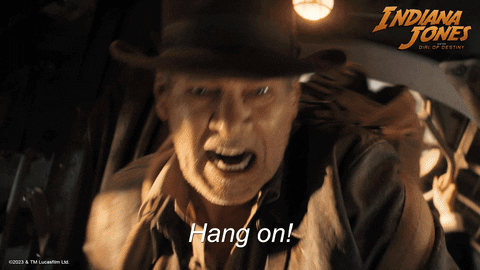My disclaimer would be that this isn't the first book I have read regarding the Indian Independence struggle and the role of Gandhi Ji. I sincerely admire his contribution (or lack thereof for others) to the cause, which he turned into a mass movement and sustained for a long time. However, this book portrays a different image of the actions of the holier-than-thou figure, who is above criticism. The book underlines Gandhi Ji's many blunders. The book bares all. The publication collects Nathuram Godse's "original testimony" from his assassination trial.
The book gave insight into Godse’s thought process and what motivated him to execute that act. Godse admits that he respected Gandhi Ji but could not allow him to pursue his escapades at the expense of the nation. Godse minutely analyses Gandhi Ji's activities and their impact on Indian society.
This book explores Gandhi ji's whims and follies and odd experiments, for which Hindu society and country paid dearly. It dramatically transformed my perspective on many heroes of the Indian Freedom Movement. This is a FANTASTIC read, and I'll explain why.
Fake Narrative
One of the prominent narratives busted by this book is the impression most Indians have regarding the participation of the Muslim community in the freedom struggle. As is evident from the proofs provided, there is nothing white or honest in the statement. Most of them were yearning to subdue Hindus and rule India. As a lost gambler, Gandhi ji continued to up his stake despite repeated failures by conceding to their demands. He, however, never got any concession from the other side. You may read and understand the various debacles and the myth of Hindu-Muslim unity.
Ali Brothers
In his pursuit of becoming the leader of the entire nation (read Hindus and Muslims), Gandhi Ji didn't blink once to part with the Ali brothers, who were rowdies and mischievous characters. These two characters played a significant role in the partition of India; however, the most shocking revelation was that these jokers invited the Amir of Afghanistan to invade India in 1920-21 with the direct and indirect support of Gandhi Ji.
All the gimmickry for the sake of becoming numero uno in India’s freedom struggle. Strange? Wait, there is a lot more in the book.
Non-Violence
Gandhi ji's flawed philosophy of non-violence, which he taught to his disciples, was disastrous from the outset. The Hindu community sacrificed terribly in the face of an aggressive and ruthless Muslim attack. It all began with the collapse of the Khilafat agitation, followed by Moplah riots, direct action day, and, eventually, partition, in which around 11 million people died, and the majority of them were Hindus. There are numerous violent incidents recorded during the period where Hindus were the victims, yet Gandhi Ji was not held accountable for his erroneous and unrealistic belief.
Treachery
Godse believed that Gandhi ji was solely responsible for all of the killings against Hindus. According to him, he pursued his Pacificist thinking and pushed Hindus not to retaliate, therefore encouraging others to continue their violent behaviour. Furthermore, Gandhi Ji readily surrendered to Muslim demands from the start till the Communal Award of 1932, thereby accepting the fraudulent partition of India that justified punishment.
As detailed in the book, not just regular Hindus but Gandhi's acquaintances and a few colleagues were subjected to his outbursts and whims.
Arm Twisting
Godse pointed out multiple cases in which Gandhi Ji coerced the Congress and HMS into meeting his demands. Despite their doubts, people gave in to his demands, with terrible results.
Secular
The book questions the secular credentials of Gandhi Ji. If we look closely, it seems today’s politicians are influenced by the Gandhi philosphy on secularism.
Godse mentioned how the Hindu corpses continued to pile up, but Mahatma urged Hindus to die with a smile on their faces. His antics also included things like "Mothers and sisters should let Muslims in Pakistan rape them", with weird explanations to justify such acts. The strange part is he never questioned or cautioned Muslims for their heinous crimes. His siding with Suhrawardy (Calcutta massacre kingpin) or embracing Abdul Qayum (killer of Swami Shraddhananda) are prime examples.
Terrified
Godse pointed out that Gandhi Ji was scarred by bullies. He often schools the victims while not sparing a word against the perpetrators.
Gandhi Ji's admonition to Jews to let Hitler kill them because there is dignity in accepting death is both humorous and horrifying. It also gives the impression that Gandhi Ji is easily intimidated by bullies. Multiple versions exist in which Gandhi Ji is blamed for teaching his students the virtue of non-violence before slaughter. The interesting thing was that only Hindus were sermonised and pushed into accepting his wishes, while Muslims were spared and permitted to burn down the nation.
Incompetence
Godse believed Gandhi Ji lacked the ability to battle the British because he was too mild on adversaries. Gandhi Ji's actions in calling off the non-cooperation movement, not endorsing HMS or other organisations, pleading with the Muslim League on multiple occasions with no success, initially refusing to participate in war efforts and then supporting them are just a few of the many flip-flops that demonstrated a failure to understand the ground situation and make realistic decisions.
Coercion
Godse stated Gandhi Ji used coercive ways to control his followers. His "fast unto death" weapon proved effective in silencing his opponents and detractors. The eventual consequence was a high death toll and the partition of India owing to Gandhi's intransigence and the greed of the Muslim League and Congress. It all began with the Khilafat revolution in 1920-21 and finished with the partition of India. The book contains detailed explanations of these acts.
Image courtesy: Google Images
.jpg)






